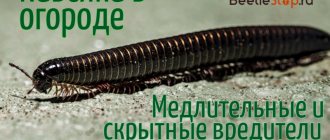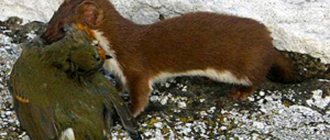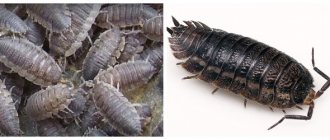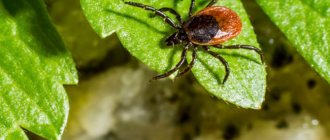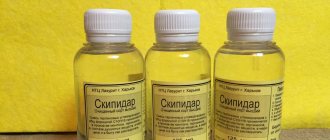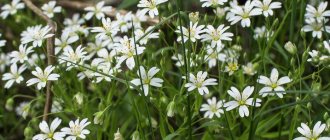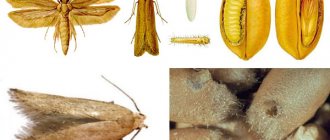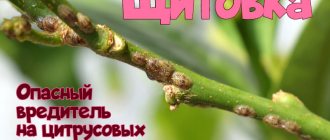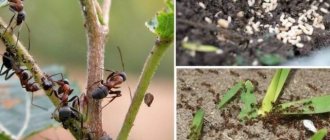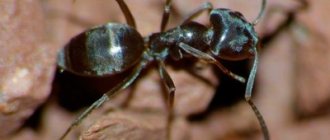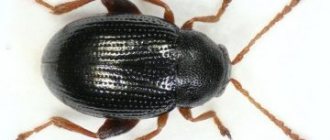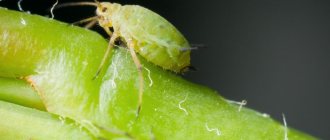Wasps love to settle in close proximity to humans, which often becomes a real problem for summer residents and owners of country cottages , since the proximity to these insects is often uncomfortable or downright dangerous.
In this case, to eliminate the problem, it is necessary to destroy not individual representatives of this species, but the entire nest at once, but first you will need to find it.
To spend less time on this process, you need to know where wasps like to build their shelters:
- Tree branches that are densely overgrown with foliage, which allows you to hide your home from prying eyes.
- Hollows in tree trunks.
- Burrows dug in the ground, if we are talking about the earthen variety of these insects.
- Shrubs with dense foliage or hedges.
- Open areas of trees or just places in the grass, if there are no more favorable natural conditions nearby for creating a nest.
- Domestic or utility buildings, such as attics, basements, cellars, closets or toilets, where people do not disturb these occupants too often.
- Niches formed under the roof of a building.
- Gaps that form in walls if the sheathing begins to move away from their surface over time.
- Balconies, loggias and other similar structures.
- Pile of rarely used items or other junk.
However, it is not always possible to find a nest on your own, even after checking all the named places, especially if we are talking about large buildings or a vast territory.
The wasps will begin to fly to the bait, at this moment it is necessary to track their route; most of the wasps will fly between their home and the bait.
Hatching rules
When a nest is discovered and it is established that it is located in close proximity to residential or domestic buildings, as well as simply places where people often visit, then its destruction is required.
However, removing wasps is a complex and dangerous process, when performing it you must remember the following rules:
- It is strictly forbidden to use fire to remove wasps and destroy a nest if it is located on a tree, a wooden structure, or in close proximity to flammable materials.
- It is also undesirable to use gasoline or kerosene for removal in these places , even if it is not planned to be set on fire, since this will contribute to the creation of dangerous conditions.
- Provide protective clothing in advance , since if an attempt to destroy the nest is unsuccessful, its inhabitants will show the maximum degree of aggression.
- Before removing wasps, warn all neighbors and people living nearby about the planned event , so that they keep their windows closed at this time and try to refrain from going outside.
- Choose the most appropriate and safety compliant method for removing the wasp nest.
Means to make bees fall
Bee attack on bees
What kind of treatment is used to make annoying bees fall off is an equally important question for those who live next door to bees and are constantly afraid of them.
Instantly and quickly paralyze insects can:
- “Clean House” aerosol against wasps and bees (contains tetramethrin, cypermerin);
- Bros aerosol, highly toxic, kills with lightning speed;
- German sprayer against flying insects Delecia;
- drugs from the company Dr. Klaus (the special design of the bottles allows you to attach even a hose for more extensive spraying).
Burning out the nest
Burning down the home of unwanted neighbors is one of the most effective methods of getting rid of them, if conditions allow you to put this method into practice.
However, before using such measures, it is necessary to take into account some features:
- The process itself is quite simple, since wasp nests are made of a special material that they extract by chewing tree bark, its structure is closest to cardboard. Therefore, it is enough just to pour gasoline or other flammable substance over their shelter and then set it on fire; complete burnout will occur in just a few seconds.
- Initially, you need to make sure that this method is safe. The walls and ceiling surface should not be made of wood, and it is also necessary to ensure that the cladding is made of fire-resistant material, so as not to accidentally start a fire.
- It is most advisable to resort to burning if the nest is located on a stone surface or if the earth variety of wasps is being fought.
- When using this method in industrial plants or logistics centers, it is necessary to make sure that there are no flammable substances or materials anywhere nearby.
Application of essential oils
Where it is not possible to use any toxic chemicals, wasps can simply be repelled without harming them. These insects cannot tolerate some strong odors. Sensing an unpleasant aroma, they fly around this place, without flying into the dacha territory.
Plan:
- Place along paths, gazebos, etc. small containers (plastic lids, saucers, etc.) with essential oil poured into them: geranium, cloves, mint, lavender, etc.
- The scented oil can be used to spot lubricate doors, railings, garden furniture, etc.
- Sprinkle water with clove oil or tea tree oil around the area.
- Place cotton pads or swabs soaked in essential oils near the veranda, terrace or gazebo, where wasps often fly.
Read: 12 methods for quickly getting rid of ants in the garden
Pouring water
A safer method of destroying a nest is to use water rather than fire for this purpose. It is most convenient to use this method if the wasps have settled in the attic or settled in the ground.
There are two options for implementing this process:
- The first method is the simplest, but is only suitable for exterminating earth wasps. This requires quickly pouring a large amount of water into the hole that leads into their home. This is best done with a hose, since it has a sufficient flow rate for significant volumes of liquid; besides, buckets and other limited containers may not be suitable, since some underground burrows are quite deep. It is necessary to stop the water supply only at the moment when it begins to flow out through its edges. After this, the entrance to the nest is securely closed with some heavy object, for example, a stone. In some cases, after flooding a wasp shelter, these insects do not emerge completely, since a significant amount of water can be absorbed by the soil, which gives the insects the opportunity to dig a new exit.
- The second method is intended for nests that are located at a certain height, for example, at ceiling level; it is more complex, dangerous and requires sufficient skill. Its essence lies in the fact that the wasp's nest must be placed entirely in a bucket, previously filled with water, and then pressed tightly against the ceiling surface so that insects cannot in any way get out through the cracks. It is necessary to install a support from below that will support the container in this position, since it will take at least one day to destroy the wasps. There are several difficulties here: the instability of the structure being built and the risk of its destruction, as well as the difficulty of pressing the water container tightly to the ceiling. If one of the described situations arises, then all efforts will be in vain.
How to remove wasps from inside walls and floors
Wasps make their nests not only in the ground and in the attic; sometimes insects climb into the cracks of the walls of the house and under the floor. It is quite difficult to smoke wasps out of these hard-to-reach places. Try the method below.
Take a rubber or plastic tube. Attach one end of it to a container filled with an insecticide (for example, Dichlorvos), and insert the other into a hole in the wall or floor. At the same time, tightly close the remaining entrances and exits that wasps can use (it is better to cover them with polyurethane foam or plaster them). Inject the poison from the balloon into the only open hole and, leaving the tube in it, wait 10-15 minutes until the insects die. Then seal this hole to prevent new wasps from getting in.
Do not forget about protection, because insects can fly out of holes in the wall or floor that you did not notice and sting. Also note: there should be no people or pets in the room.
If wasps enter your home through a vent, cover the opening with a mosquito net soaked in a chemical insecticide or vinegar solution.
Another extremely original method was discovered by us on the Internet. In the video, a man who couldn't get to a wasp's nest in his attic used a vacuum cleaner with a long tube attachment. He brought the end of the pipe to a hole in the roof through which the wasps flew out of the house, thus, everyone who tried to leave the wasp's nest was immediately sucked in by the vacuum cleaner. The process turned out to be lengthy and quite dangerous, so the vacuum cleaner hose with nozzle had to be secured to a holder. This method has a number of disadvantages. Firstly, the wasps in the vacuum cleaner bag are the most alive, and you will have to think about how to dispose of them. Secondly, this way you will not destroy the larvae. Thirdly, there is a chance that you will anger the swarm. Therefore, we still insist that it is best to use the services of a specialist.
Destruction by insecticides
The destruction of wasps using special preparations - insecticides, is one of the most effective, modern and widespread methods of combating these insects.
When choosing this method, you must adhere to the following algorithm of actions:
- All modern insecticides have a water-soluble form ; in order to obtain a working mixture, they must be mixed with water, but this is done strictly in accordance with the attached instructions.
- Prepare a polyethylene bag with a dense structure; its dimensions should be such that the entire wasp’s nest fits inside. 200 ml or more of the diluted solution is poured into the bag.
- Place the bag on the nest; this is done with sharp and quick movements so that the angry insects do not have time to fly out and attack the offender. It is tied at the top with rope, tape or tape to prevent wasps from leaving the trap.
- Usually all the inhabitants of the nest die after 2-3 days, but first it is better to tap the bag with some object to make sure that there are no living insects left inside that can attack a person.
Today, the market offers a wide range of different drugs designed to kill wasps.
The most effective and proven positives are the following types of insecticides:
Tetrix is quite expensive, but it is still very popular due to its high effectiveness. Sold in cylinders with a capacity of 250 ml, from which you can get 2-3 liters of the working mixture. The cost is about 1,200 rubles, often sold in liter canisters, which cost approximately 5,000 rubles.
Diazinon is not only a good way to kill wasps, but is also used to prevent the appearance of other insects, and is completely safe for most types of domestic animals. The price for a 1 liter container is about 1000 rubles.
Sinuzan is most often used to destroy nests indoors, since this drug can also remove other insects living at home, including cockroaches and flies. The cost of a 5-liter canister is about 8,000 rubles.
Karbofos is an inexpensive and at the same time very effective drug that not only destroys individuals of any age, but also kills larvae. The cost of a 5-liter canister will be only 2500-3000 rubles; you can also purchase a small package, which will cost no more than 30-50 rubles.
Lambda Zone will destroy not only wasps and their larvae, but also all insects in the next 100 square meters. One 50 ml package is enough for exactly this area; its price is only 600-700 rubles.
Aerosol Help Boyscout
A contact aerosol insecticide with a shocking effect that acts directly on flying insects. Active ingredients: cypermethrin and tetramethrin cause disruption of the nervous system. As a result, the wasps die from paralysis.
Application procedure:
- The container is shaken vigorously several times.
- Insert the included nozzle (thin tube) into the spray hole.
- By pressing the lid, spray the aerosol in the area where the insects are located. The treatment is carried out from a distance of about 2-5 m.
- The first victims can be observed already half an hour after treatment.
How much does it cost: 250 rubles for 250 ml.
Poisoned baits
You can also use poisoned baits to exterminate wasps; when using them, you will have to wait longer for the results, but this option is the safest in all aspects, and also does not require any skill for successful implementation.
To poison insects, you must adhere to the following instructions:
- As bait, it is best to use beer, to which additional sugar is added, or fermented jam , which has an aroma attractive to wasps. It is not recommended to use honey, since bees that do not pose a threat to humans will also react to it.
- Add any toxic substance to the bait ; it can be one of the types of insecticides or just boric acid.
- The bait and the poisonous substance must be mixed well with each other, then placed on a plate and placed on an accessible and open surface. It is best to choose a place somewhere in the trees or where children or pets cannot reach the poisoned bait.
- Renew the poisoned bait every few days ; this must be repeated until the insects finally disappear from the area where they were planned to be hatched.
Liquid DR. KLAUS
A concentrated liquid with lambda-cyhalothrin and a synergist as active ingredients, which destroys a huge number of pests, not excluding wasps. It is used to exterminate insects in the area around country houses and houses, as well as on verandas, terraces, paths, etc.
Use DR liquid. KLAUS in this way:
- Shake the bottle vigorously several times to mix its contents.
- Dilute with water, following the attached instructions, until an opaque, homogeneous emulsion of a faint milky white hue is obtained.
- Cover plants used for food with film.
- Spray the area. If the bottle has a special ejector, then you just need to connect a hose with tap water to it.
- Work must be carried out in dry weather. Spraying direction is downwind.
Note: 1 bottle is enough to treat 20 acres.
Cost: 650 rubles per 1000 ml (1 bottle).
Traps
Another good way to combat wasps is to use traps; their fundamental difference from the previous method is that the bait does not have to be poisoned.
You can purchase such a device in a store or construct it yourself if you follow the instructions below:
- To make it you will need a large plastic bottle, the recommended volume is 1.5-2 liters.
- It is necessary to twist the roof of the container and cut off its upper part by a third with a knife.
- Bait is poured inside, this again can be beer with sugar or fermented jam.
- The cut off upper third of the bottle is inserted into the lower part; this must be done with the neck down.
- The container with the bait is suspended from a tree; in the future, it only needs to be updated once every few days, since wasps caught inside, due to a number of their instincts, will not be able to find their way out into the wild.
Use of nets to protect crops
Wasps have a big sweet tooth and often spoil the harvest of grapes, pears, peaches, and other fruits and berries. You can protect yourself from them by creating a mechanical barrier that does not allow insects to get close to the fruits and spoil them.
Technology:
- Prepare in advance the required number of special bags made of tulle, gauze or fine mesh. You can sew it yourself or buy ready-made ones in the store.
- As soon as the fruits begin to plump and gain sweetness, they need to be placed in bags or wrapped in a thin cloth. It is important not to leave any cracks or holes, because wasps will crawl through everywhere.
- Shrubs and small trees can be completely wrapped.
- You should not remove the protection until harvesting.
Read: TOP 10 ways to get rid of fleas in the house
Calling professionals
For certain reasons, some people cannot cope with wasps and destroy their nests on their own. In this case, you can contact and call a specialized service that will destroy the interfering insects.
However, when contacting professionals, you need to know some features of their activities:
- The cost of calling specialists ranges from 1000-1500 rubles for exterminating wasps in urban areas and from 2500 rubles for exterminating them in suburban areas. Moreover, for virtually all companies, the price of the service depends on the distance of the dacha plot from the city.
- It is recommended to use only those companies that guarantee that the insects will not reappear. Most organizations have a warranty period of 1-2 years.
- In some localities it is not possible to call a specialized service. In this case, you can ask for help from the SES or the fire service, but it must be borne in mind that fighting wasps is not their direct responsibility, so the service is provided exclusively by prior arrangement and usually specialists do not arrive immediately.
Description of the insect
Wasps are usually 15-20 mm long. They are painted in black and yellow stripes; other, harmless insects have similar colors, so they are easy to confuse. But wasps have a characteristic narrowing in the middle of their body, hence the well-known expression “wasp waist.”
These insects have 2 pairs of wings and black antennae. At the end of the abdomen, females have a sting that is not serrated, like bees, so the wasp can use it many times.
The common wasp (Vespula vulgaris) is found everywhere and does not avoid cities. It is characteristically colored with yellow and black stripes and is found from April to October. Ground wasps build nests mainly in the ground, often using burrows left by rodents, which are more difficult to control.
Representatives of another species, the German wasp (Vespula germanica), make cocoons, securing them under roofs and in attics. In the nests they build, the queen lays eggs, and the hatching worker wasps expand the nest and feed the larvae. The larvae eat food of animal origin. Adults feed on carbohydrates - flower nectar, sweet juices, ripe fruits.
Hornets, contrary to popular belief, are not aggressive towards people. An attack occurs only in a dangerous situation. Hornet venom is also comparable to aspen and bee venom - it does not contain large amounts of toxic substances, but contains acetylcholine, which is responsible for a strong sensation of pain (the feeling of pain is also influenced by the longer sting of the hornet).
Benefits and harms
Wasps are annoying and unpleasant for various reasons:
- They transfer pathogenic microbes to food products from places where they previously fed (from droppings, carrion, landfills).
- While collecting wood to build a nest, they often destroy wooden elements of buildings, fences, and garden furniture.
- Insects select rotten wood from old trees and gnaw the bark from young branches, damaging them.
- They cause great harm to vineyards; in some years, wasps can destroy half the harvest. They pierce the berries, eating them, breaking the integrity of the skin, after which the berries rot.
However, wasps are also useful:
- by collecting food for the larvae, they destroy plant pests - mites, aphids, whiteflies, caterpillars;
- remove carrion - collect bushes of meat from dead animals into the nest;
- promote plant pollination.
Wasp venom is less toxic than bee venom and is less likely to cause allergic reactions. The sting is much more painful, although for most people it is harmless.
A wasp sting can be very dangerous for some people with severe allergies or a child. You should not eliminate the nests yourself; it is better to entrust this to specialists.
However, if you feel able to fight wasps, then you should familiarize yourself with various methods on how to get rid of a wasp nest in your country house, garage, balcony, lawn and other places.
Life cycle of an insect
Before deciding to remove a nest, it is useful to know the life cycle of the wasps:
- In the spring, it begins with the awakening of queens, fertilized in the fall, who have spent the winter in a tree or ground.
- In the spring, the queen begins to look for a suitable place to establish a colony. She begins to build a nest, forming honeycombs in which she lays eggs.
- After a few days, 1.5 mm long larvae develop from the eggs.
- Then sterile female workers appear.
- By mid-summer, there are many workers, and the queen is exclusively engaged in laying eggs and no longer builds nests.
- In the fall, males and fertile females, the future queens, begin to hatch.
- Then they leave the nest. Queens overwinter to begin a new cycle the following year.
The number of individuals hatched depends on how many queens overwintered and what weather conditions prevailed when the females established their nests:
- Dry spring contributes to an increase in the number of individuals.
- If many females survive the winter, competition to find a nest increases, so females will be in worse condition and less reproductive in the spring.
When do insects sting?
Wasps are much more aggressive than bees. They fly up to people more often and are extremely “curious” insects. It is difficult to drive them away, but it is easy to persuade them to behave aggressively and bite.
The most common reasons why wasps sting:
- The strongest individuals attack people approaching closer than 6 meters to the nest.
- When the air temperature is high (the temperature in the nest is even higher), the insects become restless.
- You should not attract their attention, make sudden movements or try to disturb the nest, start blowing on them, or wave your arms.
However, before taking the final steps, it is worth first thinking about what repels wasps or how to avoid attracting their attention.
What attracts wasps?
If wasps have taken a fancy to your porch, you might want to think about what attracts them. Options for products and scents that attract wasps:
- All kinds of sweets. These insects are extremely fond of sweets, so they fly around people eating desserts.
- Floral scents.
- The smell of food being eaten on the terrace.
- Beer, wine, kvass.
- Ripe fruits, berries.
- Creams, cosmetics, perfumes with floral aroma.
- Wasps land on meat and tear out pieces of it to feed protein food to the larvae. Therefore, it is always a good idea to cover food, and for picnics, pack it tightly and cover the plates with lids.
- Wasps and bees are lured by white and yellow flowers, which is interesting - they do not see red.
You should not drink anything from dark bottles of beer or sweet drinks left open on the street - wasps or bees may swim in them.
Particular care should be taken during gardening work. Wasps gnaw holes in thin-skinned fruits; they prefer grapes, raspberries, blackberries, strawberries, and plums, so you should pay attention to insects during the harvesting period of these fruits. You should not walk barefoot in the garden, in the forest, or on the lake, it is better to wear closed shoes. At the end of summer, insects become less active, but then they are especially aggressive when it comes to defending nests.
If the socket is not available
Sometimes the independent destruction of unwanted neighbors is complicated by the fact that the wasp's nest may be located in an extremely inconvenient place and be inaccessible.
In such cases, it is recommended to adhere to the following tips:
- Follow the route of wasps; for example, they can crawl in large numbers under wall cladding or slate on the roof. Then it is necessary to treat the surface around their loophole with toxic substances, if possible pour as much of the drug inside as possible, usually the effect of such an event is the same as when baiting the nest itself.
- Earthen nests also belong to the class of hard-to-reach shelters; they can be burned, watered, or poisonous drugs poured inside. At the same time, it is strictly forbidden to excavate underground dwellings, since this can be an extremely dangerous idea.
- Place the poisoned bait in the immediate vicinity of the place through which the wasps pass to get into their nest.
- Some people remove wasps from the most difficult to reach places using a regular vacuum cleaner. But it is worth noting that this technique is the most dangerous, moreover, in most cases it gives only temporary results, but it also takes a certain amount of time.
Bee repellent
It is known how effective bee repellents are:
- Using natural repellents. In particular, the essential oils of catnip, peppermint and cloves are very effective.
- Using chemical repellents (Bee Go, Honey Robber).
- An anti-mosquito lamp, powered by electricity, makes it possible to protect the house from bees, operates within a radius of 50 m, and is expensive.
- A repeller based on a fumigator, powered by a gas cartridge. The complex comes with a plate that is inserted, and when in operation it emits toxic substances for the bees. The only and significant drawback is that the bees return after a while.
- Ultrasonic repellers are less effective than the above.
- Naphthalene. Its smell is dangerous not only for bees, but also for humans.
- Bitter almond oil. Pour a little oil onto the fabric material and place it on a certain place so that it evaporates.
Remedy for wasps in the country
In addition, you can light a fire, since bees avoid smoke, become lethargic, and their aggressiveness when inhaling it is significantly reduced.
Attention! Smoke from a barbecue will not only not scare away bees, but, on the contrary, will help attract them, since bees really like this piquant aroma.
Planting repellent plants is an effective and simple way to get rid of unwanted residents: bees and wasps do not tolerate the smell of spicy plants. Melissa, lavender, calendula, wormwood and basil are great.
Security measures
As already mentioned, destroying a nest and the wasps inhabiting it is a rather dangerous undertaking, since if something goes wrong in this process, then a person will be confronted by a large number of aggressive insects who want to protect their home.
For this reason, it would be a good idea to take care of some security measures; below are some important tips related to this issue:
- Wear clothing made of thick fabric so that insects cannot sting through it. It is highly recommended to have a hood that will additionally protect your head.
- Gloves must be worn on your hands; varieties made of leather or thick rubber are best.
- The face should be covered with a special mosquito net mask, since bites to this part of the body are considered the most dangerous.
- Have pre-prepared ice, a tourniquet and anti-allergic drugs, for example, suprastin, which will be needed if the wasp does manage to sting a person.
Features of removal under the roof of a house, barn, balcony
Removing wasp nests under the roof is fraught with difficulties due to the inconvenient location and the inability to use fire.
You can use the following options:
- method with immersing the nest in water;
- use of insecticides;
- cleaning with a vacuum cleaner.
It is important to prepare all the necessary tools in advance and make sure that they are suitable for the task at hand. For example, the ladder must be of sufficient height, the vacuum cleaner hose must reach the hive, etc.
First aid for victims of wasp bites
If the wasp did manage to sting a person, then it is important to know about measures that can help minimize the negative consequences:
- Rinse the bite site with clean water; this will not only help disinfect the surface and minimize the likelihood of infection, but will also eliminate any remaining poison.
- If the sting remains at the site of the bite, then it must be carefully pulled out with tweezers, this will stop the further spread of the poison.
- All procedures should be carried out only with clean hands, and when using an additional tool, it must be treated with alcohol.
- Apply ice or any other cold compress to the bite site.
- Take any antiallergic drug, even if the corresponding reaction has not been diagnosed.
- According to traditional medicine, pain from a bite can be reduced by using dandelion, and swelling will be minimized by applying onion, tea compress or plantain.
At the same time, there are a number of cases in which, regardless of the situation and condition of the bitten person, a mandatory visit to the hospital and examination by a specialist is required:
- It is known that a person is allergic.
- The bites were caused by three or more insects.
- A child was bitten.
- The bite was made to any part of the face, tongue or larynx.
- Any side effects appeared, for example, changes in blood pressure, nausea, dizziness, convulsive reaction, etc.
When an insect bites or dies, a special chemical reaction occurs and specific substances begin to be released from the wasp’s body, attracting and provoking other individuals to attack.
Aerosol Raptor
The popular contact-intestinal insecticidal aerosol not only repels, but also kills flying parasites. It works on the basis of highly effective nerve poisons: tetramethrin and permethrin. One cylinder is enough to treat 20 m2.
Use the Raptor aerosol product as follows:
- Remove the cap from the bottle.
- By pressing the button, spray the product for 15-20 seconds.
- After 15 minutes, the annoying and inconvenient insects will disappear.
- A pleasant orange aroma will remain in the air.
Price: 200 rubles for 275 ml.
